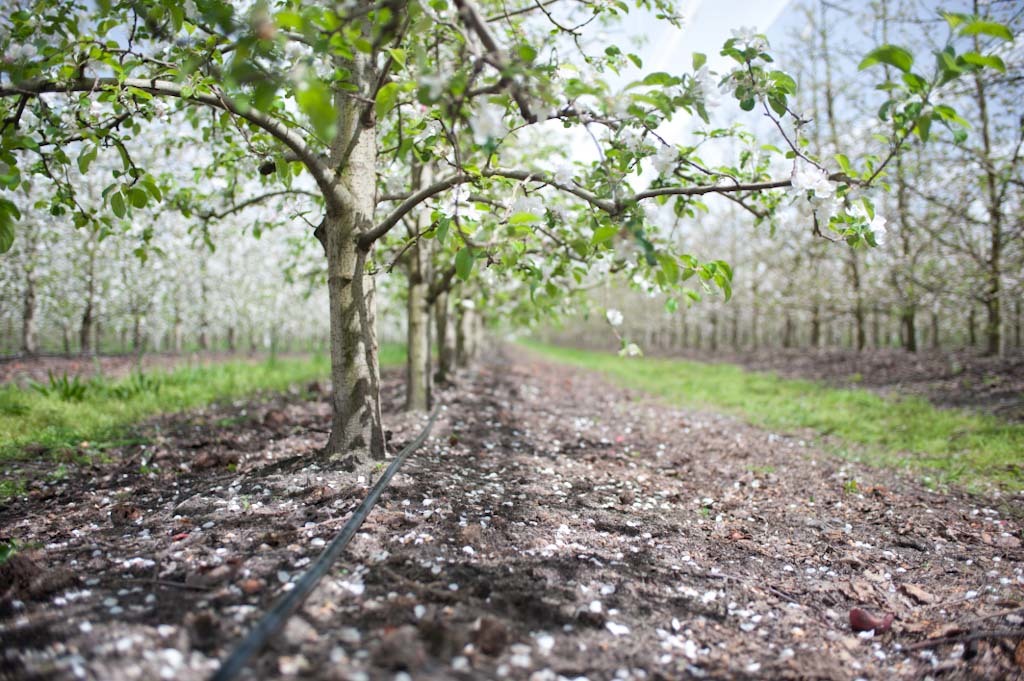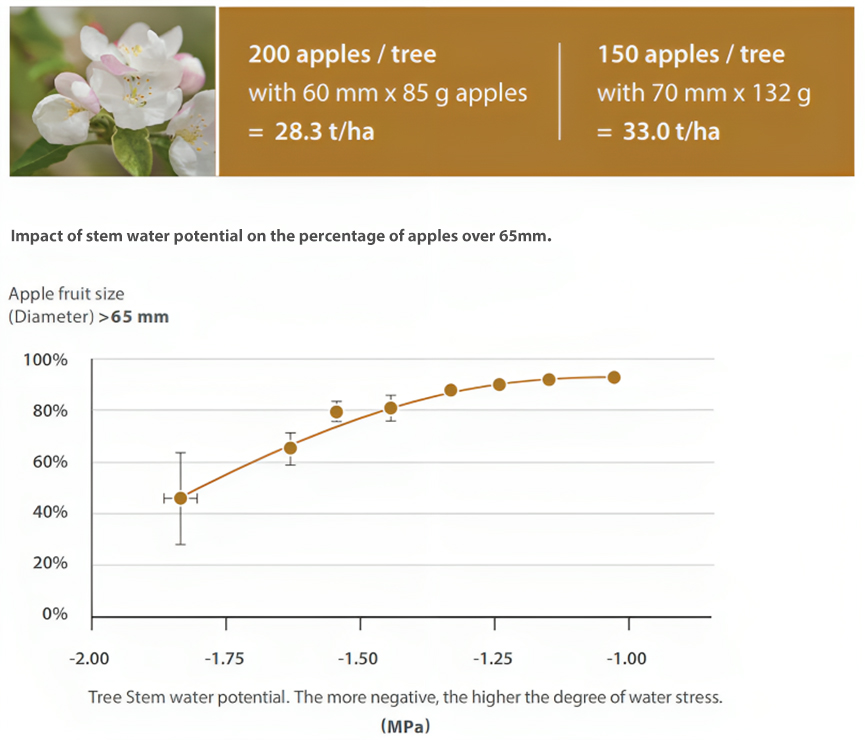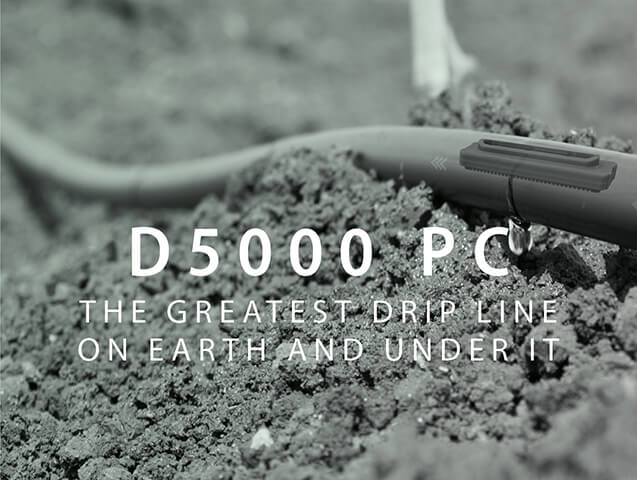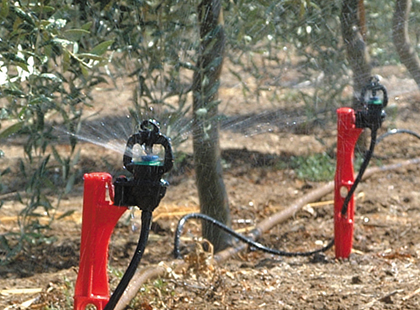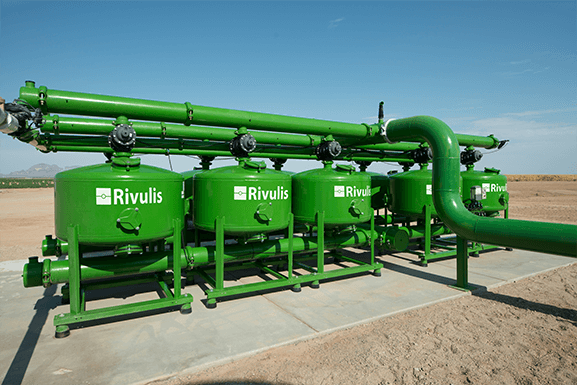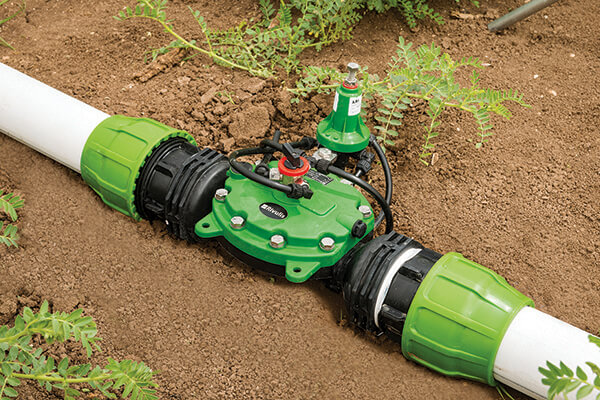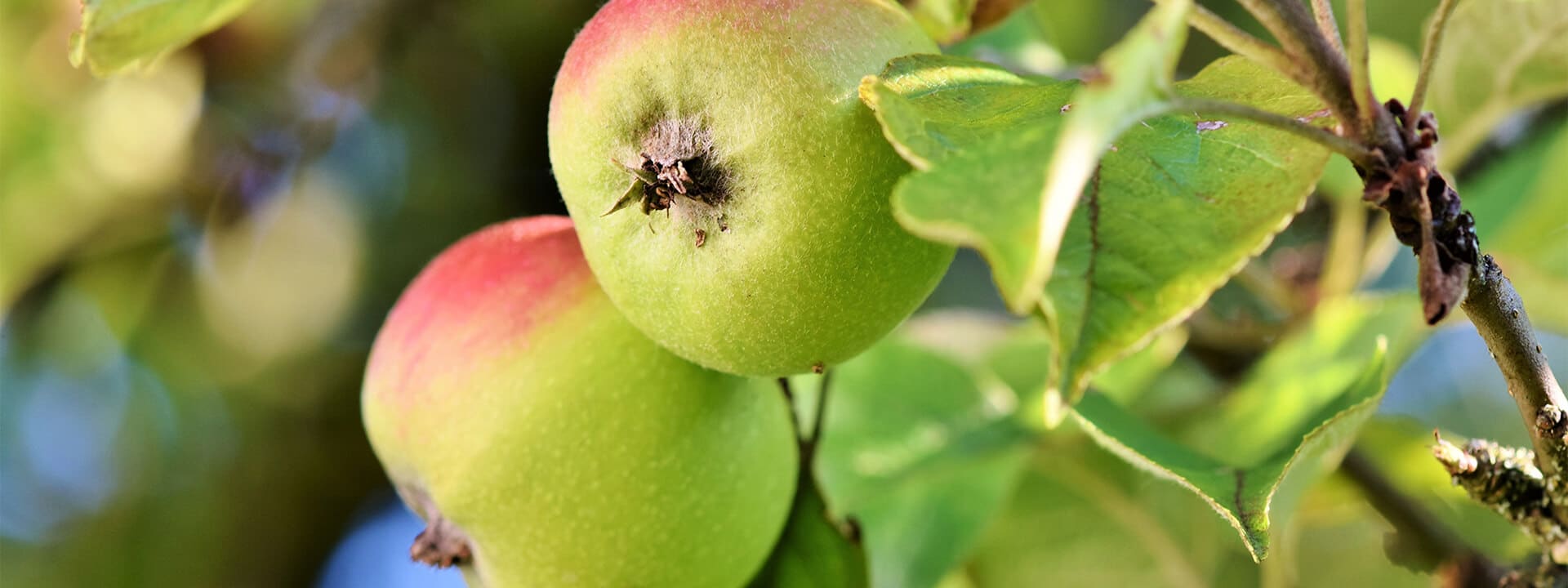

Apples and Pears Irrigation
Commercial success in growing apples and pears is a fine art. The right irrigation leads to best-in-class quality and yield. Price differentials between export quality and low-grade produce are substantial, so it pays to get it right.
Through the extensive acquisition of leading irrigation companies like NaanDan, JainUSA, T-Systems, Plastro, and Eurodrip, the Rivulis collective has the widest portfolio in the market and has worked with thousands of apple and pear farmers to make sure they get maximum output as well as the highest returns for their crops.
It has created bespoke systems and pioneered products like the D5000 and the Amnon to suit specific apple and pear tree irrigation needs.
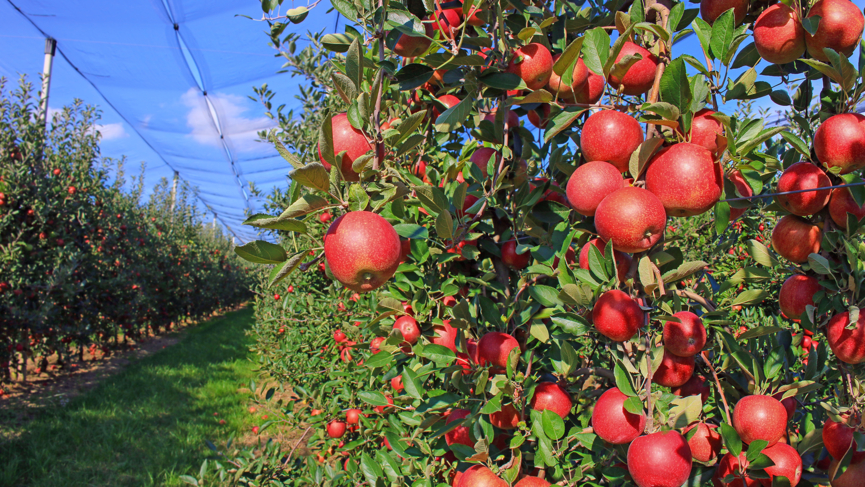
The Importance of Proper Irrigation for Apples & Pears
Apples and pears are both part of the Pomoideae family, so in this case, we really can compare them when it comes to irrigation. Growers achieve better prices for larger fruit, and the size apples and pears grow to is directly correlated to available water potential.
The best irrigation also makes fruit crunchier and sweeter, as well as having the right shape and color, with minimal skin blemishes.
As a relatively water-intensive crop, where water needs change as the fruit matures, drip irrigation makes it possible to focus on smaller orchards that produce high yields, larger fruit, and ultimately higher tonnage per hectare.
Precision matters too. Placing orchards under water stress means the fruit can drop too early, shrinkage, and have shorter cold storage and shelf-life. Over-irrigation leads to slower root growth, increased disease risk, changes in the soil profile, and ultimately nutritional deficiencies.
Calculate Your Water Requirement
Crop Water Requirement per Month (Southern Hemisphere)
| Growth Stage | Month | Coefficient (Kc) | Average daily water requirement (mm/day) |
Average monthly water requirement (mm/day) |
MI/ha/ month |
| Budburst and flowering | September | 0.45 | 1.1 | 33 | 0.3 |
| October | 0.45 | 1.5 | 47 | 0.5 | |
| Rapid shoot growth | November | 0.95 | 4.0 | 119 | 1.2 |
| December | 0.95 | 4.8 | 147 | 1.5 | |
| January | 0.95 | 4.9 | 152 | 1.5 | |
| Beginning of fruit fill | February | 0.95 | 4.3 | 122 | 1.2 |
| March | 0.95 | 3.4 | 106 | 1.1 | |
| Harvest | April | 0.7 | 1.7 | 53 | 0.5 |
| May | 0.7 | 1.1 | 33 | 0.3 | |
| June | 0.35 | 0.4 | 11 | 0.1 | |
| Leaf fall | July | 0.35 | 0.4 | 12 | 0.1 |
| August | 0.35 | 0.6 | 18 | 0.2 | |
| Total water requirement (MI/ha/season) | 8.5 | ||||
| Effective rainfall (MI/ha/) | 3-7 | ||||
| Total irrigation demand (MI/ha/season) | 1-5 | ||||
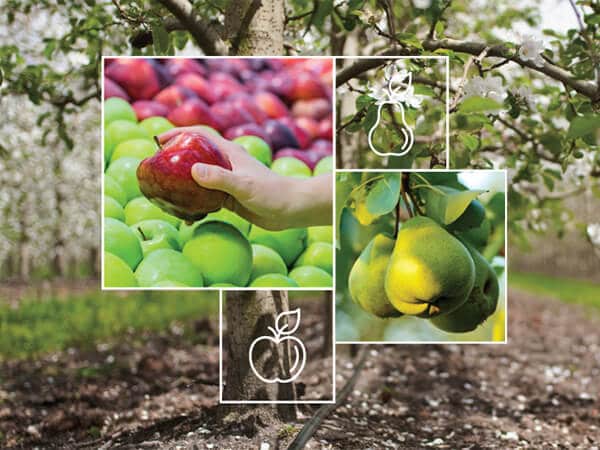
The Advantages of Drip Irrigation in Apples and Pears
Drip irrigation for apples and pears is the answer to healthier trees with better crops, as well as water conservation. Rivulis understands intrinsically that modern orchards are dense, with 3.0m x 1.2m (10ft x 4ft) tree spacings as the most popular orchard configurations.
Rivulis works with farmers to design irrigation systems that give your trees what they need when they need it. Especially during peak demand, in confined spaces, significantly reducing the risk of disease while improving yields. Reduce time, money, and labor, while decreasing your water usage, and incidence of disease.
Rivulis Micro Irrigation Systems for Optimal Fruit Yield
Smaller root zones favor drip line irrigation, although there are times when micro-sprinklers can be better options.
Drip Line for Apples & Pears
Commonly dwarfing rootstock is used to deliver high yields and is easier to harvest. This means their root zones are limited and because of this, there are agronomic benefits to shorter spacing (ideally under 70cm [2.3 ft]) between drip emitters.
It is important to have a pressure-compensated (PC) drip line to ensure the same flow rate from every dripper across the drip line for crop uniformity, even on sloping terrain.
Drip lines can either hang above the orchard or be installed on the surface of the ground. Hanging the drip line means that it is out of the way of machinery that moves through the orchard.
Its lower flow rate and reduced dripper spacing (30cm – 40cm [1ft – 1.3ft]) make the D5000 an ideal example for this application.
Micro Sprinklers & Frost Protection
Sprinklers are sometimes used for frost protection when growing apples and pears in a winter rainfall region, or Mediterranean climate.
During summer-time fruit maturation, sprinklers will irrigate cover crops in orchard inter-rows, helping to preserve the land from erosion, and reduce orchard temperature and compaction from machinery. Additionally, sprinklers become a form of frost protection by releasing latent heat through water and melting ice.
Sprinklers can be on stakes or hung from an LDPE hose and must also be pressure compensated.

Irrigation Solutions for Apples and Pears Trees
Frequently Asked Questions about Apples and Pears Crops
Apple orchards are most productive when irrigated with drip solutions. The Rivulis range of drip irrigation options work together to create a bespoke system for specific farm needs. The uniform water control delivered right to the root, together with reduced risk of disease and other benefits makes for the best possible quality and quantity.
Irrigation schedules vary throughout the maturation of the fruit. During budburst and flowering, rapid shoot growth (which varies slightly between apples and pears), and fruit fill it is recommended that soil moisture is readily available. At the end of fruit fill and during harvest water needs decrease. At leaf fall when the tree enters dormancy, irrigation is generally not needed.
Drip irrigation is by far the most economical method of irrigation due to efficiencies created through direct water and fertilizer application to plant roots. Less water and evaporation occur because water is not sprayed. Tough, heavy drip lines are typically used in orchards meaning infrastructure savings and resilience to rodent and pest damage. There are occasions when sprinklers are used for cooling and frost prevention reasons.

Any information provided herein, including any case study referrals are for information purposes only and actual results may vary.
Whilst every effort has been made to ensure all data is accurate, the accuracy of all data cannot be guaranteed and it is advised that you to consult with an irrigation specialist for your specific needs and to carefully review technical specifications for proper use.
As some products are not available in all regions, please contact your local authorized dealer for additional details.


